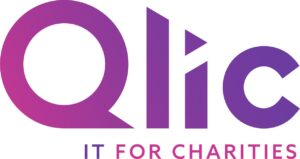Nonprofits are turning to cloud-based platforms to streamline their operations, enhance collaboration and ensure efficient document management. Among these platforms, SharePoint stands out for its robust features and adaptability, catering specifically to the multifaceted needs of nonprofits. Recognising the right tool for document management and collaboration is not just about convenience; it’s about maximising impact, fostering teamwork and optimising resources.
This blog delves into the critical comparison between OneDrive and SharePoint, two contenders in cloud storage and collaboration. By exploring their advantages and specific use cases, this discussion is dedicated to empowering nonprofits with the knowledge to make informed decisions in their journey towards digital transformation.
OneDrive vs SharePoint: What’s the difference?
Within the comprehensive suite of tools that Microsoft 365 offers, OneDrive and SharePoint emerge as pivotal components, each playing a unique role in redefining how organisations manage data and collaborate.
OneDrive is primarily a cloud storage service within Microsoft 365 that allows individuals and organisations to store their files securely in the cloud. This enables users to access their data from anywhere, on any device, provided they have an internet connection. OneDrive is deeply integrated and offers a seamless experience for those already embedded within the Microsoft ecosystem.
On the other hand, SharePoint extends beyond simple file storage. It is a robust, web-based collaboration platform that integrates with Microsoft 365. SharePoint supports document management, content management and the creation of intranets within organisations. Its capabilities are not just limited to storing files but also facilitating real-time collaboration, project management and workflow automation.
While OneDrive offers a personal cloud storage solution, SharePoint stands out as a collaborative platform designed to enhance productivity and teamwork within an organisation. Each tool has distinct advantages, so understanding these differences is crucial for organisations looking to leverage the Microsoft 365 suite effectively.

SharePoint for Nonprofits
SharePoint offers an array of capabilities that can significantly benefit nonprofit organisations in their search to streamline operations and collaboration. SharePoint provides a dynamic environment where nonprofits can create, manage and share content in real time. This enhances the way teams work together and communicate both internally and externally.
As an example, SharePoint’s team site feature is a powerful tool for team collaboration, enabling members to share documents, data and resources efficiently. This creates a centralised space where project teams can gather to share updates and work on documents simultaneously. The integration with Microsoft Office apps further simplifies the process of editing and reviewing documents.
SharePoint also offers a communication site. This is ideal for publishing updates and important news across the entire organisation. This feature can be used to highlight significant achievements, upcoming events, or organisational changes to ensure the team are well-informed and engaged.
In terms of document management, SharePoint acts as an online folder system that provides an organised structure for storing and accessing documents. This system comes with enhanced security features to ensure sensitive information within the organisation is protected.
These capabilities make SharePoint an invaluable asset for nonprofits looking to improve their productivity and operational efficiency. Whether it’s through enhancing team collaboration, streamlining document management, or improving internal communications. Take a deeper dive into the basics of SharePoint and explore how it can benefit your charity.
Advantages of SharePoint for Nonprofits:
SharePoint is a great tool for nonprofits wanting to harness the power of technology and streamline their operations. The platform has a multifaceted nature and offers an array of capabilities tailor-made for the nonprofit sector.
- Extensive Collaboration Tools
- Integration Capabilities
- Customisation Options
Let’s explore each of these benefits further below.
Extensive Collaboration Tools
At its core, SharePoint provides an expansive suite of collaboration features. Document libraries offer a centralised space for storing and sharing files. Calendars and task lists facilitate project management, ensuring that deadlines are met and priorities are clear. SharePoint also has discussion boards where team members can share insights, ask questions and collectively solve problems.
Integration Capabilities
SharePoint seamlessly integrates with Microsoft applications and a wide range of third-party tools. This integration enhances productivity by allowing teams to work within a familiar ecosystem, leveraging tools like Microsoft Word, Excel and Teams for collaborative editing.
Customisation Options
SharePoint offers a high degree of customisability. Nonprofits can tailor the platform to reflect their branding, modify site layouts to better suit their workflows and create custom applications to meet organisational needs. This level of customisation ensures that SharePoint can evolve with the nonprofit and adapt to changing requirements and business processes.
These advantages highlight SharePoint’s role as a powerful tool in the nonprofit sector. It offers solutions that are comprehensive in scope but also adaptable to the needs of organisations. Nonprofits can leverage SharePoint’s collaboration tools, integration capabilities and customisation options to enhance their operational efficiency, improve team productivity and better serve their communities.

OneDrive for Nonprofits
OneDrive for Nonprofits emerges solutions for nonprofit organisations aiming to streamline their operations and enhance productivity. As a cloud-based storage platform, OneDrive provides a secure and accessible space for storing a myriad of documents. This platform shines where individuals or small teams work on projects independently and can save, access, and manage their documents.
OneDrive simplifies the sharing process by allowing users to generate access links for files and folders, making it simple to share documents with stakeholders in and outside the organisation. This feature is useful for nonprofits looking to distribute reports, policy documents, or promotional materials quickly and securely. Device synchronisation is another great feature that ensures users have access to their files from any device, such as a mobile device, when travelling. This seamless synchronisation across devices guarantees that the latest versions of documents are always at the fingertips of those who need them.
Integration with Microsoft 365 tools is another significant advantage for nonprofits using OneDrive. This allows users to manage documents online whilst facilitating real time collaboration on documents like grant applications, press releases, or event planning documents.
Advantages of OneDrive for Nonprofits:
The digital landscape for nonprofits is fraught with challenges ranging from resource constraints to the need for effective collaboration across geographically dispersed teams. Microsoft’s OneDrive addresses these challenges by offering a suite of advantages that are tailor-made for the unique needs of the nonprofit sector.
- Accessibility
- File Sharing
- Version Control
Let’s explore each of these benefits further below.
Accessibility
OneDrive’s cloud-based nature means files are not tethered to any single device. Users can access their documents from anywhere with an internet connection. This level of accessibility is invaluable for nonprofits, where flexibility and the ability to work remotely are often key to operations. Whether staff are working from home or at different office locations, OneDrive ensures that everyone has access any information they need.
File Sharing
OneDrive streamlines the process of sharing files and folders, making it effortless to collaborate with staff, volunteers and external stakeholders. OneDrive simplifies the process by ensuring the right people have access to the right information. This ease of sharing not only enhances collaboration but also speeds up decision-making processes.
Version Control
The dynamic nature of nonprofit projects often means documents undergo frequent revisions. OneDrive’s version history feature is a game-changer, allowing users to track changes. This feature is particularly useful in collaborative environments where multiple stakeholders are editing documents.
OneDrive presents a compelling solution for organisations navigating a digital transformation. Its emphasis on accessibility ensures that staff can stay productive, regardless of their physical location. The ease of file sharing fosters a collaborative culture. All the advantages position OneDrive as a powerful tool in the nonprofit toolkit, enabling organisations to focus on their mission.

OneDrive vs SharePoint: Which is right for my nonprofit?
Now that we’ve explored the elements of OneDrive and SharePoint, the question arises: which platform is the right choice for your nonprofit? Ultimately, the decision depends on your organisation’s specific needs. Factors such as collaboration needs, document management requirements, customisation options, integration with existing systems, scalability, security, user experience and cost considerations all play pivotal roles in making this decision.
- Collaboration Needs
- Document Management Requirements
- Customisation Options
- Integration with Existing Systems
- Scalability
- Security and Compliance
- User Experience
- Cost Considerations
Collaboration Needs
Evaluate the level of collaboration within your organisation and how you would like it to improve. While OneDrive excels in basic file storage and sharing, SharePoint offers a richer set of collaboration tools. These include document libraries, workflows and team sites designed to facilitate extensive collaboration across your organisation.
Document Management Requirements
Consider the volume and complexity of the documents your nonprofit manages. SharePoint’s advanced document management features cater to organisations with sophisticated document management needs, making it a robust platform for those who require more than just storage.
Customisation Options
The need for customisation and branding can significantly influence your organisation’s choice. SharePoint allows for extensive customisation, enabling organisations to tailor the platform to their specific needs and branding guidelines. However, OneDrive offers less in terms of customisation but may suffice for organisations with less unique needs.
Integration with Existing Systems
The integration capabilities with other systems should not be overlooked. Both OneDrive and SharePoint integrate seamlessly with Microsoft Office applications, yet SharePoint boasts broader integration capabilities with third-party tools and services, offering a more versatile solution for those who rely on a wide array of applications.
Scalability
Your organisation’s trajectory and scalability are also something to consider. SharePoint is designed to accommodate the expanding needs of larger organisations, offering a scalable solution that grows with you. OneDrive may be more aligned with the needs of smaller organisations or teams.
Security and Compliance
Given the paramount importance of cyber security for charities, evaluating the security and compliance of each platform is essential. Both OneDrive and SharePoint offer robust security measures, but your choice should align with any specific security or compliance requirements dictated by your industry or regulations, bearing in mind Microsoft 365’s overall security solutions.
User Experience
The ease of use and the potential need for training should be considered. OneDrive’s straightforward and intuitive interface may facilitate quicker adoption among end-users, whereas SharePoint’s more complex feature set might necessitate additional training and onboarding.
Cost Considerations
Assessing the cost of each platform is vital, including licensing fees, storage costs and any necessary additional features or services. Nonprofits should carefully consider the overall value each platform provides in relation to their budget and look into nonprofit plans and pricing. Additionally, nonprofits should explore potential grants or free charity Microsoft licences available to them if they have nonprofit status. Microsoft offers special pricing or programs for eligible nonprofit organisations, making advanced digital tools more accessible and affordable.
Final Thoughts on SharePoint for Nonprofits
To conclude, it’s clear that both OneDrive and SharePoint serve as valuable tools for nonprofits and each platform caters to distinct needs. OneDrive is ideal for straightforward file storage and small-scale collaborations. In contrast, SharePoint provides a more comprehensive set of features suitable for nonprofits needing advanced document management, extensive collaboration tools and customisation options.
The choice between OneDrive and SharePoint should be guided by your nonprofit’s specific requirements and objectives. There are also a variety of alternative cloud storage solutions for nonprofits that cater to different needs and budgets.
Selecting the right platform is a strategic decision that can enhance your nonprofit’s operational efficiency and capacity to achieve its mission!
GET IN TOUCH
Would your charity like to find out more about Sharepoint and Onedrive and which solution is right for you? Book your FREE Consultation with our IT experts at Qlic IT by clicking the button below.






